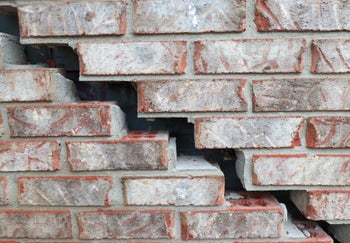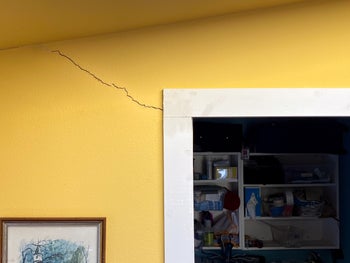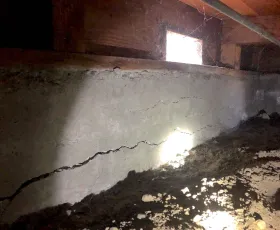Foundation Cracks and How to Fix Them
Table of Contents
1. Foundation Cracks In The Bay Area
2. Types Of Foundation Cracks And Repair Solutions
3. When To Worry
Foundation Cracks In The Bay Area
A foundation crack can be a bad sign. However, the size and shape of the crack may indicate the cause of foundation failure in your home. Knowing what caused the foundation problem is essential to determine the best solution. Fortunately, the expert foundation repair team at Bay Area Underpinning can examine cracks in your foundation and find the best repair options.
Large, deep foundation cracks are an obvious problem – these cracks might indicate that the home is no longer structurally sound. However, even small cracks should be repaired as soon as possible. Foundation cracks, even small ones, may allow water, debris, or pests an entry point into your home. Keeping your home safe and sealed requires fixing cracks as soon as you notice them, no matter how small and insignificant they might seem to you at first.
Fortunately, we have a range of different crack repair options for cracks in your home. We offer solutions such as epoxy crack injection, carbon fiber repair, and foundation piers (push piers, resistance piers, helical piers, slab piers, concrete piers). Contact our professional team to find out which solution best fits your home and budget.
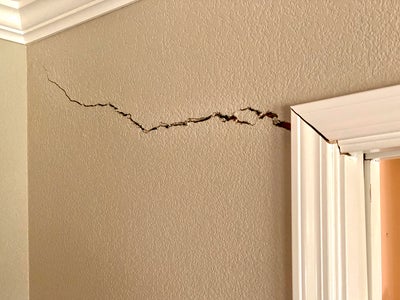
Types Of Foundation Cracks And Repair Solutions
There are several different kinds of cracks that you might find in your home. Here is a breakdown of different cracks and what they might mean for your California home:
Vertical Cracks
Vertical cracks are normal in most foundations and are not necessarily a sign of structural danger. These cracks run up and down the foundation walls or sides. Wide vertical cracks may result from hydrostatic pressure from excess moisture in the soil pushing on the foundation. Carbon fiber repair may help straighten basement walls if this is the case. Otherwise, small cracks can be filled with an epoxy crack injection to prevent leakage.
Diagonal Cracks
This kind of crack is usually caused by differential foundation settlement . If the settlement is severe enough, piers can be installed to lift the settled part of the foundation. For slab-on-grade piers, slab piers are best, while helical piers or resistance piers work well for other types of foundations.
Horizontal Cracks
These are the most serious kinds of cracks. Cracks running sideways in your foundation indicate soil pressure due to temperature fluctuations or hydrostatic pressure. Excess moisture in the soil can push on the foundation walls, causing horizontal cracks. If the water in the soil freezes, it can also put pressure on the foundation walls, leading to cracks running horizontally. These cracks are best fixed with carbon fiber repair methods, which help stabilize and straighten bowing and cracked foundation walls.
Stair-Step Cracks
Stair-step cracks in your home’s foundation are most likely the result of foundation sinking and settlement. If these cracks do not go through the foundation, they may be minor and fixed with injection techniques. However, if the foundation is cracked all the way through, a more involved solution such as pier installation may be required. Be sure to have these cracks looked at by a professional.
When To Worry
Not all cracks after your home’s structural integrity. Some are just ugly. However, if you see any of the following cracks, you should contact an experienced foundation repair contractor right away for an inspection:
- Cracks wider than 1/10 inch
- Cracks that are wider at one end
- Cracks that are growing
- Stair step cracks in brick or masonry
- Any horizontal foundation crack, with or without bowing
- Several vertical cracks near each other
- Large, diagonal cracks
- Cracks that go across the ceiling and down a wall
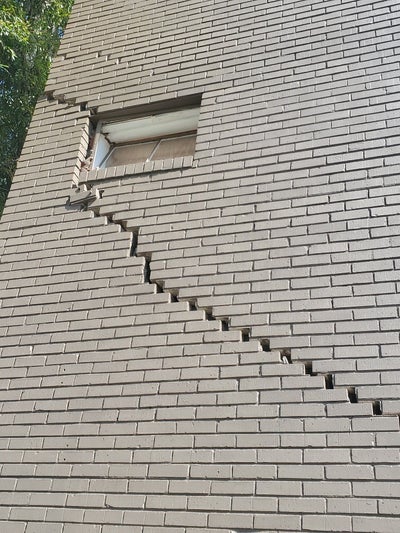
For more information, see Cracks In Foundation: When To Worry And When You Can Relax.
No matter what type of crack you find in your Bay Area foundation, we have a solution. Our expert team can fix foundation cracks in your home and leave the structure stable and intact for years to come. Call us today to get a free quote!
More Resources
Publish Date:
Last Modified Date:

Our Locations
2333 Courage Dr. Suite C
Fairfield, CA 94533
1161 N Fair Oaks Ave
Sunnyvale, CA 94089

